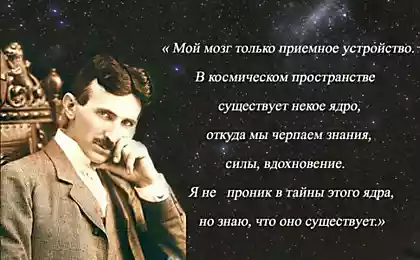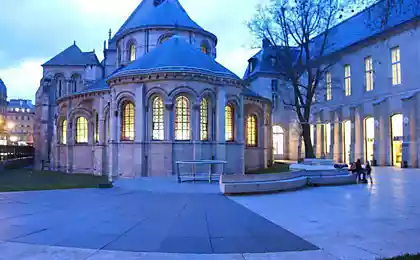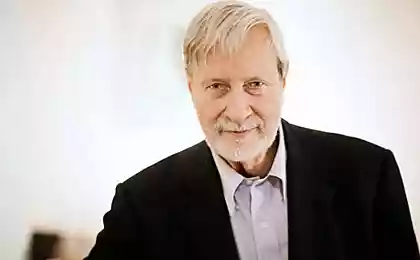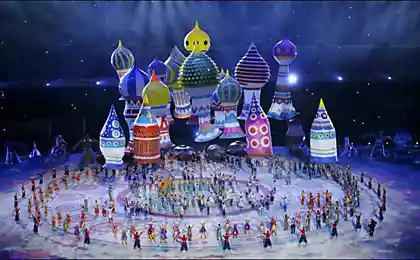760
10 inventions of the industrial revolution
Twenty nine million four hundred twenty nine thousand one hundred seventy three
The industrial revolution -- an innovative period of the mid 18th-19th centuries — people moved from an agrarian existence in a relatively urban lifestyle. And although we call this era a "revolution", its name is somewhat misleading. It is a movement that originated in Britain, there was a sudden burst of achievements, and presented a series of successive breakthroughs that relied or fed off each other.
Just as the dot-com was an integral part of the 1990s, namely inventions made this era unique. Without all these brilliant minds many important goods and services we enjoy today, simply would not exist. Regardless of whether the inventor of a simple dreamer, a theorist or persistent Creator of important things — but this revolution changed the lives of many people (including us).
Difference and analytical machines
Many of us the phrase "put your calculators at exam time" will always cause concern, but such exams without calculators demonstrate what life was like for Charles Babbage. English inventor and mathematician born in 1791, over time, his task became the study of the mathematical tables in search of errors. Such tables are typically used in astronomy, banking and engineering, and because it was created by hand, often contained errors. Babbage decided to create a calculator and eventually developed several models.
Of course Babbage could not be modern computer components like transistors, so his computers were purely mechanical. They were surprisingly big, complex, and difficult to build (none of Babbage's machines did not appear during his lifetime). For example, difference engine number one could solve polynomials, but the design consisted of 25 000 individual parts with a total weight of 15 tons. Difference engine number two was developed in the period from 1847 to 1849 and was more elegant, along with comparable power and three times less weight.
There was another design, thanks to which he received the title of father of modern computing, according to some people. In 1834, Babbage decided to create a machine that could be programmed. Like modern computers, Babbage's machine could store data for later use in other calculations and perform logic operations like if-then. He is not particularly engaged in the development of the design of the analytical machine, as in the case of Delta machines, but to represent the grandeur first, you need to know that it was so massive that she needed a steam engine to work.
A pneumatic tyre
Like many inventions of this era, a pneumatic tyre "stood on the shoulders of giants", ushering in a new wave of inventions. Thus, although the invention is often that important things are attributed to John Dunlop to him in 1839 Charles Goodyear patented the vulcanization process of rubber.
Before the experiments, Goodyear rubber was still a very new product from a relatively small range of applications, but, due to its properties very quickly changed. Vulcanization in which rubber is strengthened sulfur and lead, created a more durable material suitable for the production process.
As rubber technology advanced quickly, other related inventions of the industrial revolution has evolved much more slowly. Despite achievements such as the pedals and a driven wheel, a Bicycle has remained more a subject of curiosity than a practical form of transportation throughout most of the 19th century, because they were cumbersome, and their frame is heavy, and the wheels — hard and malomanevrenny.
Dunlop, a veterinarian by profession, noted these shortcomings when he watched his son with barely controlled three-wheeled bike, and decided to fix them. First he tried to wrap a garden hose in the ring and wrap it with liquid rubber. This option was greatly superior to the existing bus made of leather and reinforced rubber. Very soon, Dunlop began producing Bicycle tires with the help of W. Edlin and Co., and it later became the Dunlop Rubber Company. She quickly seized the market and significantly increased the production of bicycles. Soon after, the Dunlop Rubber Company began manufacturing rubber tires for another product of the industrial revolution — car.
As with rubber, the practical application of the following paragraph for a long time was not obvious.
Anesthesia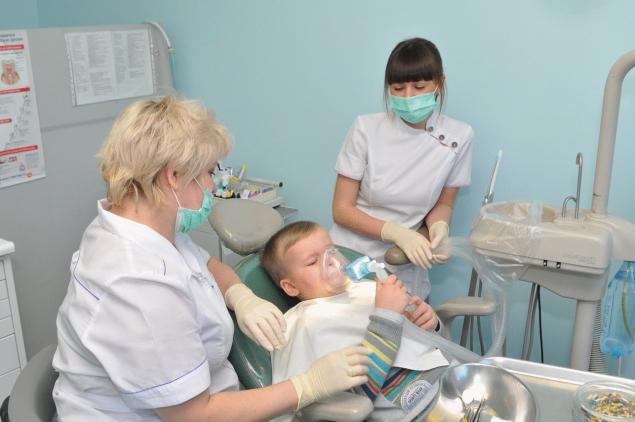
The invention of the type of the bulbs take up very many pages in the book of history, but we are confident that any practicing surgeon would call anesthesia best product of the industrial revolution. Before its invention the fix for any ailment was probably more painful than the ailment. One of the biggest problems associated with the removal of a tooth or limb, was to hold the patient in a relaxed state, often with the help of alcohol and opium. Today, of course, we can all thank the anesthesia because few of us can remember the pain from the surgery at all.
Nitrous oxide and ether were discovered in the early 1800-ies, but both tools did not find much practical use besides useless intoxication. Nitrous oxide was generally better known as laughing gas and used for the entertainment of the audience. During one of these demonstrations a young dentist, Horace wells saw someone inhaled the gas injured his leg. When the man returned to his seat, wells asked if it hurt the victim, and heard in reply that there is. After that the dentist decided to use laughing gas in their work, and the first subjects volunteered to be himself. The next day, wells Gardner Colton, the organizer of the show, has already experienced laughing gas in the office of wells. Gas operated great.
Shortly thereafter, experienced and ether as anesthesia in long operations, although who really was behind the bringing of this tool, so it is for certain known.
Photo
Many changed the world inventions have appeared during the period of the industrial revolution. The camera was not one of them. In fact, the predecessor of the camera, known as camera obscura, appeared in the late 1500's.
However, storing images the camera has long been a problem, especially if you haven't had time to draw them. Then came Nicephor Niepce. In 1820-ies the Frenchman came up with the idea to impose a coated paper, filled with light-sensitive chemicals on an image projected by the camera obscura. After eight hours there was the world's first photograph.
Realizing that eight hours is too long for posing in shooting mode, family portrait, Niepce collaborated with Louis Daguerre to improve his design, and that Daguerre continued the work of Niepce after his death in 1833. The so-called digerati first aroused enthusiasm in the French Parliament, and then throughout the world. However, although the daguerreotype was able to create very detailed images, they could not make a comment.
A contemporary of Daguerre, William Henry Fox Talbot, also worked on improving the photographic images in the 1830-ies, and made the first negative, through which the light projected on photographic paper, and create a positive. Similar achievements quickly began to find a place, and gradually the camera became even able to capture moving objects, the exposure time is reduced. Photo of the horse taken in 1877, ending the long debate on the subject off whether all four horse's legs from the ground during the gallop (Yes). So the next time you pull out your smartphone to take a picture, think for a moment about the centuries of innovation that have allowed this picture to be born.
The phonograph
Nothing can fully replicate the experience of a live performance of your favorite band. Not so long ago, live performances were the only way of listening to music. Thomas Edison changed the game forever, and developed a method of transcription of Telegraph message that led him to the idea of the phonograph. The idea is simple, but beautiful: the recording needle pushes the grooves corresponding to the sound waves of music or speech, in a rotating cylinder covered with tin, and the other needle reproduces the original sound on the basis of these grooves.
Unlike Babbage and his decade of attempts to see their projects realized, Edison had instructed his mechanics to John Kruesi to build a machine and after 30 hours got their hands on a working prototype. But Edison didn't stop there. His first tin cylinders could play the music a few times, so then Edison replaced the tin with wax. By the time the phonograph Edison was not the only one on the market, and over time, people began to abandon the Edison cylinders. The basic mechanism is preserved and used to this day. Not bad for a random invention.
Steam engine
Today fascinates us as the roar of V8 engines and high-speed jet aircraft, when steam technology was incredible. Moreover, it has played a giant role in supporting the industrial revolution. Before this era, people used horses and carriages to get around, and the practice of mining in the mines were very time-consuming and inefficient.
James watt, a Scottish engineer developed the steam engine, but he managed to make a more efficient version of itself in the 1760-ies by adding a separate condenser. It forever changed the mining industry.
At first, some inventors used the steam engine for pumping and removal of water from mines, which gave improved access to resources. As these engines became popular, the engineers wondered how they could be improved. Version steam engine of watt was not in need of cooling after each blow, which was followed by the extraction of resources at the time.
Others wondered, what if instead of transporting raw materials, goods and people on horses, to use the machine on steam? These thoughts inspired the inventors to explore the potential of steam engines outside of the mining world. Modification of the steam engine of watt led to other developments of the industrial revolution, including the first steam locomotives and steam-powered court.
Another invention, perhaps less known, but has definitely an important value.
Conservation
Open the cupboard and accurately find at least one useful invention of the industrial revolution. The same period that gave us the steam engine changed our way of food storage.
After the dissemination of the UK in other parts of the world, inventions have started to fuel the industrial revolution with constant speed. For example, this happened with a French chef and innovator named Nicolas Appert. In search of ways to preserve food without losing the taste and freshness upper regularly experimented with storing food in containers. In the end, he came to the conclusion that the storage of food, combined with the drying or salt, does not improve taste, but quite the contrary.
Upper thought that storing products in containers is especially useful for sailors suffering from malnutrition in the sea. The Frenchman worked on the technique of boiling, which was in the premises of the food in the jar, seal, and then boiling in water to create a vacuum seal. Upper achieved its goal by developing a special autoclave for conservation in the early 1800-ies. The basic concept has survived until now.
Telegraph
Before the advent of smartphones and laptops, people still continued to use this technology before the industrial revolution, as the Telegraph — although much less than before.
Through power system networks, the Telegraph could transmit messages from one place to another over long distances. The recipient of the message should interpret the markings produced by the machine, via Morse code.
The first message was sent in 1844 by Samuel Morse, the inventor of the Telegraph, and it accurately conveys his excitement. He gave "What is happening Lord?" with their new system, alluding to the fact that we had found something big. It was. The Morse Telegraph allowed people to communicate almost instantaneously at a great distance.
Information transmitted over Telegraph lines, also seriously contributed to the development of media and allowed governments faster to share information. The development of the Telegraph even gave rise to the first news service, Associated Press. In the end, the invention Morse had connected America with Europe, and this was very important at the time.
The Distaff "Jenny"
Whether it's socks or some fashionable garments, it's the textile industry during the industrial revolution made it possible for these things to the masses.
The distaff "Jenny" or spinning machine, Hargreaves, made a great contribution to the development of this process. After the raw materials — cotton or wool — going from it to make the yarn, and often this work is very laborious for people.
James Hargreaves solved that problem. Taking up the challenge of the British Royal society of arts, Hargreaves has developed a device that far exceeded the requirements of the contest, so it made at least six yarns at the same time. Hargreaves built a machine that gave out eight threads, which dramatically increases the effectiveness of these activities.
The device consisted of a spinning wheel, which controlled the flow of material. At one end of the device was rotating material, and the other thread was going in a yarn under the hand wheel.
Roads and mines
To create the infrastructure to support the industrial revolution was not so easy. Demand for metals, including iron, incited industry to find more efficient methods of production and transportation of raw materials.
For several decades, iron miners, the company supplied iron for the factories and production companies. To get cheap metal mining companies supplied more iron than wrought iron. In addition, people began to use metals or just explore the physical properties of materials in an industrial environment.
The mass production of iron allowed the mechanization of other inventions of the industrial revolution. Without steel industry did not develop Railways, locomotives, could have caused a stagnation in the development of transport and other industries.
Source: hi-news.ru
The industrial revolution -- an innovative period of the mid 18th-19th centuries — people moved from an agrarian existence in a relatively urban lifestyle. And although we call this era a "revolution", its name is somewhat misleading. It is a movement that originated in Britain, there was a sudden burst of achievements, and presented a series of successive breakthroughs that relied or fed off each other.
Just as the dot-com was an integral part of the 1990s, namely inventions made this era unique. Without all these brilliant minds many important goods and services we enjoy today, simply would not exist. Regardless of whether the inventor of a simple dreamer, a theorist or persistent Creator of important things — but this revolution changed the lives of many people (including us).
Difference and analytical machines

Many of us the phrase "put your calculators at exam time" will always cause concern, but such exams without calculators demonstrate what life was like for Charles Babbage. English inventor and mathematician born in 1791, over time, his task became the study of the mathematical tables in search of errors. Such tables are typically used in astronomy, banking and engineering, and because it was created by hand, often contained errors. Babbage decided to create a calculator and eventually developed several models.
Of course Babbage could not be modern computer components like transistors, so his computers were purely mechanical. They were surprisingly big, complex, and difficult to build (none of Babbage's machines did not appear during his lifetime). For example, difference engine number one could solve polynomials, but the design consisted of 25 000 individual parts with a total weight of 15 tons. Difference engine number two was developed in the period from 1847 to 1849 and was more elegant, along with comparable power and three times less weight.
There was another design, thanks to which he received the title of father of modern computing, according to some people. In 1834, Babbage decided to create a machine that could be programmed. Like modern computers, Babbage's machine could store data for later use in other calculations and perform logic operations like if-then. He is not particularly engaged in the development of the design of the analytical machine, as in the case of Delta machines, but to represent the grandeur first, you need to know that it was so massive that she needed a steam engine to work.
A pneumatic tyre

Like many inventions of this era, a pneumatic tyre "stood on the shoulders of giants", ushering in a new wave of inventions. Thus, although the invention is often that important things are attributed to John Dunlop to him in 1839 Charles Goodyear patented the vulcanization process of rubber.
Before the experiments, Goodyear rubber was still a very new product from a relatively small range of applications, but, due to its properties very quickly changed. Vulcanization in which rubber is strengthened sulfur and lead, created a more durable material suitable for the production process.
As rubber technology advanced quickly, other related inventions of the industrial revolution has evolved much more slowly. Despite achievements such as the pedals and a driven wheel, a Bicycle has remained more a subject of curiosity than a practical form of transportation throughout most of the 19th century, because they were cumbersome, and their frame is heavy, and the wheels — hard and malomanevrenny.
Dunlop, a veterinarian by profession, noted these shortcomings when he watched his son with barely controlled three-wheeled bike, and decided to fix them. First he tried to wrap a garden hose in the ring and wrap it with liquid rubber. This option was greatly superior to the existing bus made of leather and reinforced rubber. Very soon, Dunlop began producing Bicycle tires with the help of W. Edlin and Co., and it later became the Dunlop Rubber Company. She quickly seized the market and significantly increased the production of bicycles. Soon after, the Dunlop Rubber Company began manufacturing rubber tires for another product of the industrial revolution — car.
As with rubber, the practical application of the following paragraph for a long time was not obvious.
Anesthesia

The invention of the type of the bulbs take up very many pages in the book of history, but we are confident that any practicing surgeon would call anesthesia best product of the industrial revolution. Before its invention the fix for any ailment was probably more painful than the ailment. One of the biggest problems associated with the removal of a tooth or limb, was to hold the patient in a relaxed state, often with the help of alcohol and opium. Today, of course, we can all thank the anesthesia because few of us can remember the pain from the surgery at all.
Nitrous oxide and ether were discovered in the early 1800-ies, but both tools did not find much practical use besides useless intoxication. Nitrous oxide was generally better known as laughing gas and used for the entertainment of the audience. During one of these demonstrations a young dentist, Horace wells saw someone inhaled the gas injured his leg. When the man returned to his seat, wells asked if it hurt the victim, and heard in reply that there is. After that the dentist decided to use laughing gas in their work, and the first subjects volunteered to be himself. The next day, wells Gardner Colton, the organizer of the show, has already experienced laughing gas in the office of wells. Gas operated great.
Shortly thereafter, experienced and ether as anesthesia in long operations, although who really was behind the bringing of this tool, so it is for certain known.
Photo

Many changed the world inventions have appeared during the period of the industrial revolution. The camera was not one of them. In fact, the predecessor of the camera, known as camera obscura, appeared in the late 1500's.
However, storing images the camera has long been a problem, especially if you haven't had time to draw them. Then came Nicephor Niepce. In 1820-ies the Frenchman came up with the idea to impose a coated paper, filled with light-sensitive chemicals on an image projected by the camera obscura. After eight hours there was the world's first photograph.
Realizing that eight hours is too long for posing in shooting mode, family portrait, Niepce collaborated with Louis Daguerre to improve his design, and that Daguerre continued the work of Niepce after his death in 1833. The so-called digerati first aroused enthusiasm in the French Parliament, and then throughout the world. However, although the daguerreotype was able to create very detailed images, they could not make a comment.
A contemporary of Daguerre, William Henry Fox Talbot, also worked on improving the photographic images in the 1830-ies, and made the first negative, through which the light projected on photographic paper, and create a positive. Similar achievements quickly began to find a place, and gradually the camera became even able to capture moving objects, the exposure time is reduced. Photo of the horse taken in 1877, ending the long debate on the subject off whether all four horse's legs from the ground during the gallop (Yes). So the next time you pull out your smartphone to take a picture, think for a moment about the centuries of innovation that have allowed this picture to be born.
The phonograph

Nothing can fully replicate the experience of a live performance of your favorite band. Not so long ago, live performances were the only way of listening to music. Thomas Edison changed the game forever, and developed a method of transcription of Telegraph message that led him to the idea of the phonograph. The idea is simple, but beautiful: the recording needle pushes the grooves corresponding to the sound waves of music or speech, in a rotating cylinder covered with tin, and the other needle reproduces the original sound on the basis of these grooves.
Unlike Babbage and his decade of attempts to see their projects realized, Edison had instructed his mechanics to John Kruesi to build a machine and after 30 hours got their hands on a working prototype. But Edison didn't stop there. His first tin cylinders could play the music a few times, so then Edison replaced the tin with wax. By the time the phonograph Edison was not the only one on the market, and over time, people began to abandon the Edison cylinders. The basic mechanism is preserved and used to this day. Not bad for a random invention.
Steam engine

Today fascinates us as the roar of V8 engines and high-speed jet aircraft, when steam technology was incredible. Moreover, it has played a giant role in supporting the industrial revolution. Before this era, people used horses and carriages to get around, and the practice of mining in the mines were very time-consuming and inefficient.
James watt, a Scottish engineer developed the steam engine, but he managed to make a more efficient version of itself in the 1760-ies by adding a separate condenser. It forever changed the mining industry.
At first, some inventors used the steam engine for pumping and removal of water from mines, which gave improved access to resources. As these engines became popular, the engineers wondered how they could be improved. Version steam engine of watt was not in need of cooling after each blow, which was followed by the extraction of resources at the time.
Others wondered, what if instead of transporting raw materials, goods and people on horses, to use the machine on steam? These thoughts inspired the inventors to explore the potential of steam engines outside of the mining world. Modification of the steam engine of watt led to other developments of the industrial revolution, including the first steam locomotives and steam-powered court.
Another invention, perhaps less known, but has definitely an important value.
Conservation

Open the cupboard and accurately find at least one useful invention of the industrial revolution. The same period that gave us the steam engine changed our way of food storage.
After the dissemination of the UK in other parts of the world, inventions have started to fuel the industrial revolution with constant speed. For example, this happened with a French chef and innovator named Nicolas Appert. In search of ways to preserve food without losing the taste and freshness upper regularly experimented with storing food in containers. In the end, he came to the conclusion that the storage of food, combined with the drying or salt, does not improve taste, but quite the contrary.
Upper thought that storing products in containers is especially useful for sailors suffering from malnutrition in the sea. The Frenchman worked on the technique of boiling, which was in the premises of the food in the jar, seal, and then boiling in water to create a vacuum seal. Upper achieved its goal by developing a special autoclave for conservation in the early 1800-ies. The basic concept has survived until now.
Telegraph

Before the advent of smartphones and laptops, people still continued to use this technology before the industrial revolution, as the Telegraph — although much less than before.
Through power system networks, the Telegraph could transmit messages from one place to another over long distances. The recipient of the message should interpret the markings produced by the machine, via Morse code.
The first message was sent in 1844 by Samuel Morse, the inventor of the Telegraph, and it accurately conveys his excitement. He gave "What is happening Lord?" with their new system, alluding to the fact that we had found something big. It was. The Morse Telegraph allowed people to communicate almost instantaneously at a great distance.
Information transmitted over Telegraph lines, also seriously contributed to the development of media and allowed governments faster to share information. The development of the Telegraph even gave rise to the first news service, Associated Press. In the end, the invention Morse had connected America with Europe, and this was very important at the time.
The Distaff "Jenny"

Whether it's socks or some fashionable garments, it's the textile industry during the industrial revolution made it possible for these things to the masses.
The distaff "Jenny" or spinning machine, Hargreaves, made a great contribution to the development of this process. After the raw materials — cotton or wool — going from it to make the yarn, and often this work is very laborious for people.
James Hargreaves solved that problem. Taking up the challenge of the British Royal society of arts, Hargreaves has developed a device that far exceeded the requirements of the contest, so it made at least six yarns at the same time. Hargreaves built a machine that gave out eight threads, which dramatically increases the effectiveness of these activities.
The device consisted of a spinning wheel, which controlled the flow of material. At one end of the device was rotating material, and the other thread was going in a yarn under the hand wheel.
Roads and mines

To create the infrastructure to support the industrial revolution was not so easy. Demand for metals, including iron, incited industry to find more efficient methods of production and transportation of raw materials.
For several decades, iron miners, the company supplied iron for the factories and production companies. To get cheap metal mining companies supplied more iron than wrought iron. In addition, people began to use metals or just explore the physical properties of materials in an industrial environment.
The mass production of iron allowed the mechanization of other inventions of the industrial revolution. Without steel industry did not develop Railways, locomotives, could have caused a stagnation in the development of transport and other industries.
Source: hi-news.ru










